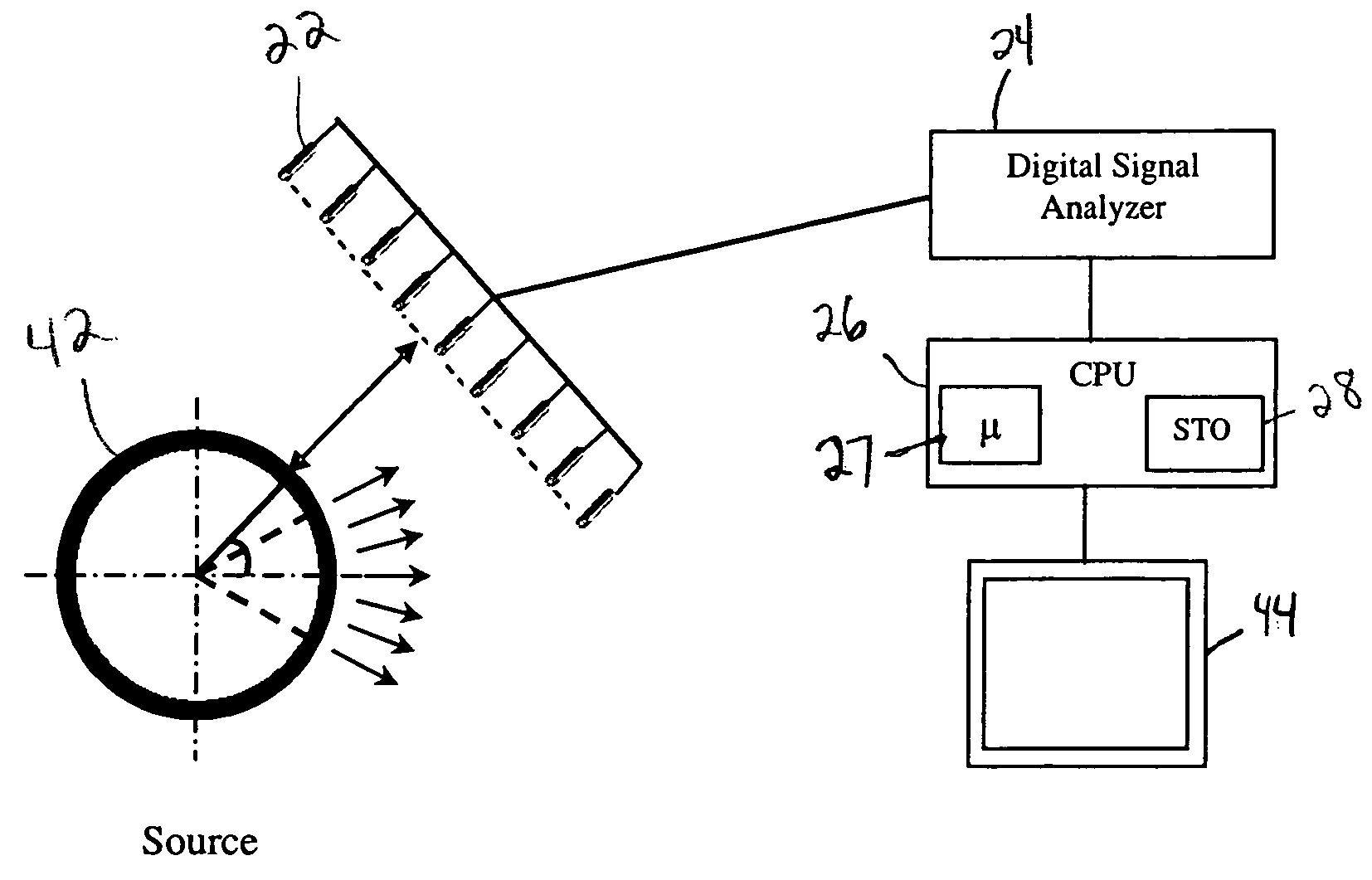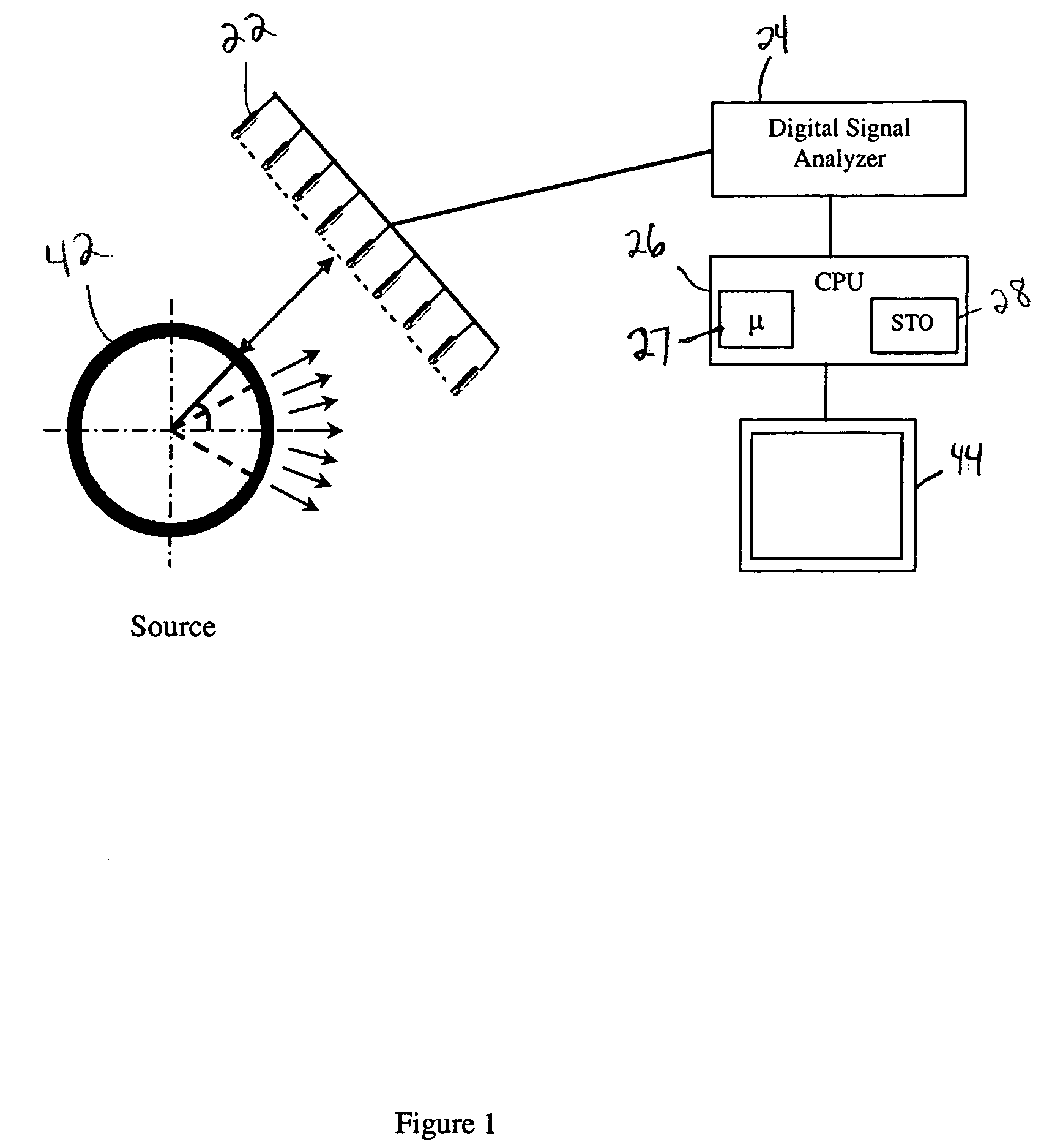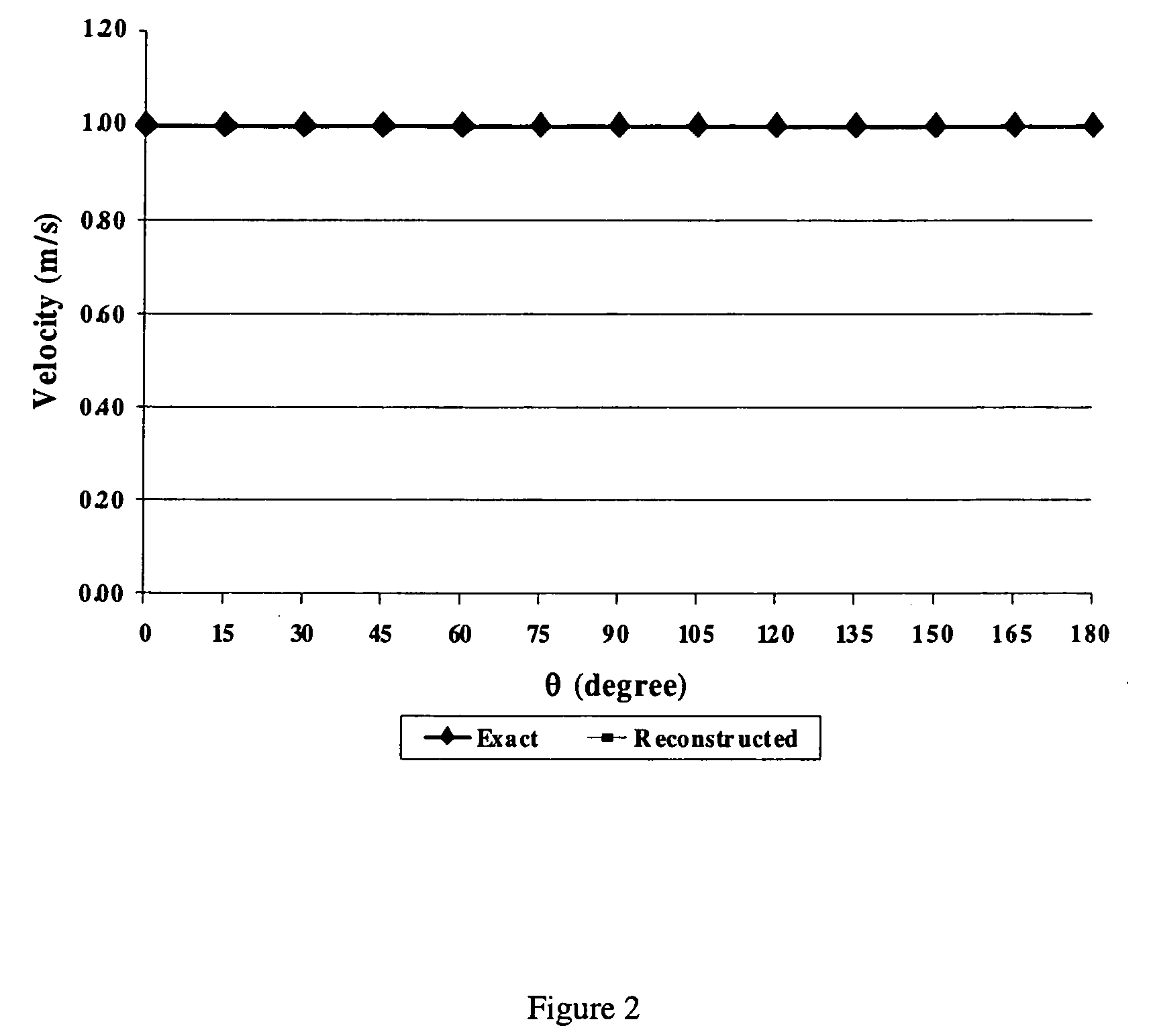Reconstruction of transient acoustic radiation from a finite object subject to arbitrarily time-dependent excitation
- Summary
- Abstract
- Description
- Claims
- Application Information
AI Technical Summary
Problems solved by technology
Method used
Image
Examples
Embodiment Construction
[0015] The acoustic pressure reconstruction system 20 of the present invention is shown schematically in FIG. 1. The system 20 generally comprises a plurality of transducers 22, such as microphones, connected to a signal analyzer 24. Alternatively, a digital sound processing computer board or software algorithm could be used as signal analyzer 24. The system 20 further includes a computer 26 receiving and analyzing the data from the signal analyzer 24. As is well-known, the computer 26 includes a processor 27 operating a computer programs stored on computer storage media 28, which may be one or more of RAM, ROM, hard-drive, CD-ROM, DVD, optical or magnetic media, or any other computer-readable medium. Computer media 28 includes a computer program, which when executed by processor 27 performs the steps described below, including performance of the algorithms of the present invention described below.
[0016] In FIG. 1, nine transducers 22 are placed adjacent to the sound source 42, pre...
PUM
 Login to View More
Login to View More Abstract
Description
Claims
Application Information
 Login to View More
Login to View More - R&D
- Intellectual Property
- Life Sciences
- Materials
- Tech Scout
- Unparalleled Data Quality
- Higher Quality Content
- 60% Fewer Hallucinations
Browse by: Latest US Patents, China's latest patents, Technical Efficacy Thesaurus, Application Domain, Technology Topic, Popular Technical Reports.
© 2025 PatSnap. All rights reserved.Legal|Privacy policy|Modern Slavery Act Transparency Statement|Sitemap|About US| Contact US: help@patsnap.com



